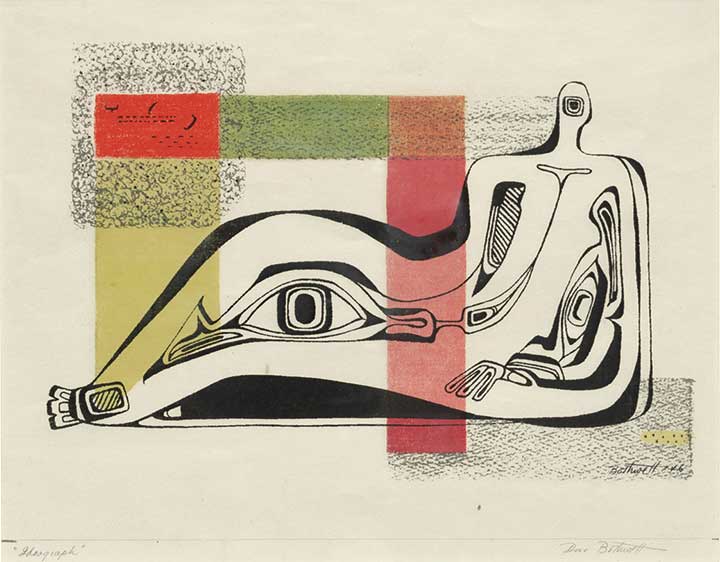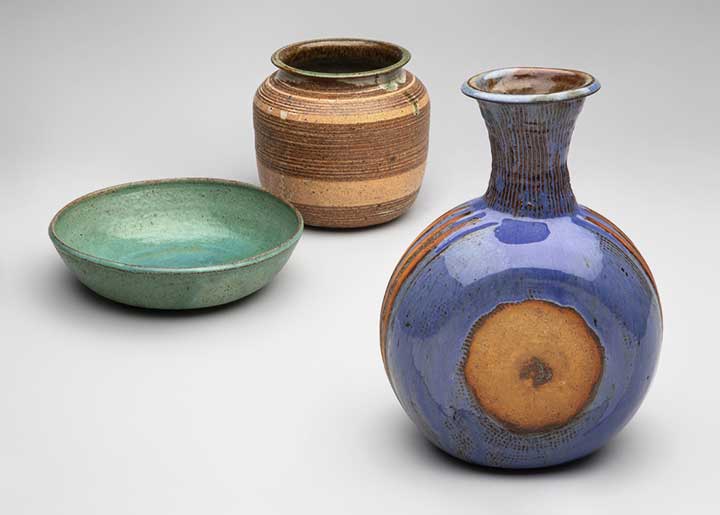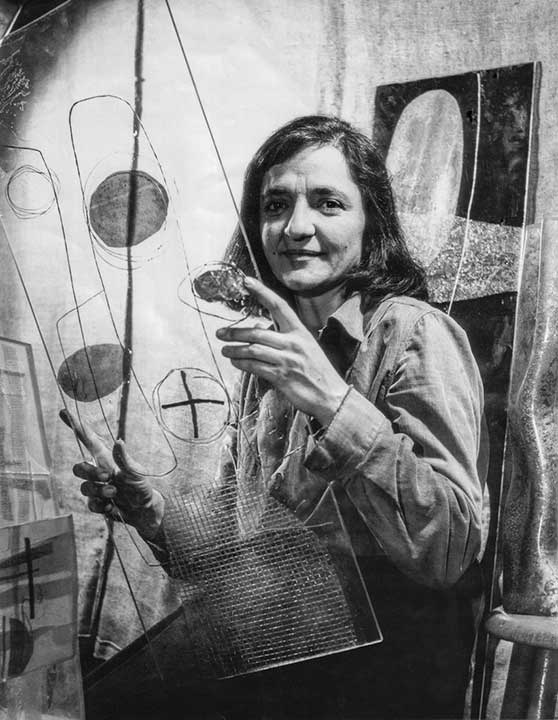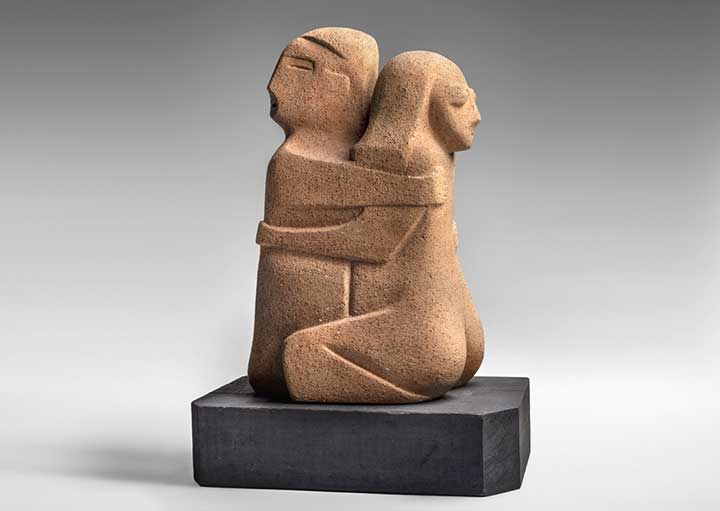
SFO Show Focuses on Modernist Women
 |
It was a man’s world, the mid-20th century, just as much in artistic bohemian climes as in corporate suites. That is why, a wonderful new exhibit suggests, some women trying to succeed in art and design stepped away from contemporary attitudes to become – renegades.
‘California Modernist Women: Groundbreaking Creativity,’ on display through April 30, 2023, both at Harvey Milk Terminal 1 at SFO and, in part, online, is first of all a great display of varied objects and photos, many of which will not be familiar to most fans of mid-century modernism.
Artists range from the (now) famous – Ruth Asawa (1926-2013), legendary potter Marguerite Wildenhain (1896–1985), Edith Heath (1911–2005); to the lesser known -- Dorr Bothwell (1902–2000), sculptor Freda Koblick, potter Eileen Reynolds Curtis (1917-1977), and designer Zahara Schatz, among others.
But the exhibit is foremost a celebration of women who did whatever it took to succeed in a world in which women creators were regarded as hobbyists, not real artists or designers. Some of them, curator Daniel Calderon says, had to go more than the extra mile to break free.
 |
“I love the renegades in this exhibit,” he says, mentioning Dorr Bothwell, who worked in many media and was a pioneer in serigraph prints. When work she submitted for exhibit under her formal name 'Doris' was rejected, she submitted under her gender ambivalent nickname 'Dorr,' and got in.
And, as a young woman in the 1920s, she traveled around the world, settling on “a little sub-island of Pago Pago,” Calderon says.
He adds, “She became a revered part of the island’s society.” When the authorities tried to deport Bothwell, she joined the chief’s family to avoid that. “As part of that she received a band of Samoan tattoos circling her thighs.”
“One of the things that stands out to me are the challenges these women faced and overcame,” Calderon says. “That makes [the art] so much more important. The mid-century was defined in popular culture as a man’s world, and that’s the way it was.”
The exhibit, drawn largely from the collection of Steve Cabella and from his The Modern i Shop, includes 89 objects, including photos, at the airport gallery. The SFO Museum is known for its wide ranging and superb exhibitions.
 |
Even those not traveling can visit the exhibit, which is in a ticketed area, Departures Level 2, Gallery 1E, by making an appointment: [email protected].
The Bauhaus-trained Wildenhain won renown during her life for her superb and varied ceramics, and as a teacher. Asawa, who became a creator of mesh sculptures and amusing public fountains in San Francisco, fought not only against anti-woman but anti-Japanese prejudice.
“After training for three years to become an art teacher,” Calderon writes in an exhibition panel, “she was denied the necessary internship for graduation due to postwar racism.”
Some of the more remarkable pieces in the exhibit are by two relatively little known artisans who worked in unusual materials.
“Freda Koblick (1920–2011) was a native of San Francisco who pioneered cast-acrylic plastic sculpture,” Calderon writes. She was, he adds, “the first woman to graduate from the Plastic Industries Technical Institute in Los Angeles
“Koblick found that the control of curvature, plane, and texture was far more precise to accomplish in plastic than with other transparent media such as glass.”
On display from her is an acrylic tray from 1952 that appears to be as effervescent as a 7Up.
 |
Then there is Zahara Schatz (1916–99), born in Jerusalem and later based in Berkeley, who “created modern decorative arts from metal and laminated plastic,” Calderon writes.
“From the 1940s–70s, Zahara Schatz experimented with Plexiglas, an aircraft-grade plastic that offered fantastic optical clarity and opportunities to explore color and reflection,” he writes.
“Mary Fuller McChesney (1922-2022) was the only artist I was not aware of,” before starting work on the exhibit, Calderon says. “She’s up at the top of the list for me, personally.”
McChesney, who with her husband, Robert McChesney, turned a mountaintop near Petaluma into a wonderland filled with oddball sculptures of animals and animal-like forms, worked in several media, and was a historian and novelist besides.
Calderon notes that McChesney was self taught. “She seems like the kind of artist who was going to do her own thing,” he says.
Asked why he loves her work, Calderon says, “It’s different. It’s powerful. It’s also very humane. There’s a certain mystique to it. Who knows what she was up to? There’s a real depth to her pieces.”
Other artists in the exhibit are Ray Eames (1912–88); Margaret (1894–1983), Esther (1896–1992), and Helen Bruton (1898–1985); jeweler Margaret De Patta (1903–64); and ceramicist Eileen Reynolds Curtis (1915–77).
About these women Calderon says, “Amazing artists and amazing people.”
- ‹ previous
- 520 of 677
- next ›



